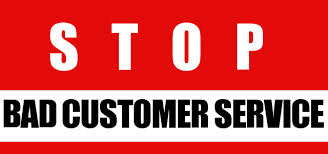Call Center Customer Care
by PrepaidWirelessGuy

I've seen an increasing number of inquiries and general discussion
wireless, and I felt compelled to post this here. There's
absolutely no doubt that customer service quality has been lacking for
both prepaid and postpaid. However, with the greater price
sensitivity of the prepaid business, there's been a long deterioration
of quality service that certainly hasn't gone unnoticed.
What's The Root Problem?
Fortunately, though sadly, this is easy to answer. For years
carriers, and even companies across industries, have been moving their
customer care call centers offshore, whether it be the Philippines,
India, and even Mexico, for the simple objective of saving costs.
The spirit of the solution is simple. The cost of
labor in these countries is cheaper, and in a lot of cases, the
education level is even similar to what you'd find for similar
positions in North America. So why has it been failing so
badly?
One major pain point has been that even for knowledgeable customer care
reps, there has been a language or accent barrier. Meaning
that they either don't understand us very well, or we have difficulty
understanding them. Some may find this comment to be
prejudice, however, it's a simple fact. For call center
customer care quality to be where it needs to be, both parties need to
understand one another. The simple fact is that thick accents
can severely impact our ability to communicate. Given enough
time, most people can adapt to different accents, however, we don't
tend to call enough to make that adjustment.
The Challenge
Carriers have continued to struggle with the age old question of how to
keep costs low. Managing call centers is a major cost,
usually second only to the cost of topup margins and compensation.
For even modest prepaid wireless providers, we're talking
about tens of millions of dollars PER MONTH. So even small
cost reductions can have a major impact. And let's be real
here, we all want the lowest possible plan prices, phones, etc. If asked,
I bet most of us would say we'd rather have a lower cost phone or plan,
than have carriers spend that money on better customer care.
Though therein lies the paradox. When we do have to
call customer care, we bitch and complain about how bad it is!
In other words, we hate it, but we don't want to pay for it.
Some Solutions
Carriers have tried different things over the years, including
implementing call center speech and accent training, which is common
for these outsourced call center companies to provide, changed
countries (ex. from India to the Philippines or Mexico) where language
barriers have been generally felt to be less extreme, and even paying
more for supposedly better
changes hasn't been impressive to say the least.
Other Considerations
It's not just about the cost of labor, but also the
performance metrics that carriers implement in these call centers.
For example, they must answer the phone within a certain
number of seconds (ex. 80% of call must be answered within 30 seconds),
and the call duration must be no greater a defined amount of time (ex.
1.5 minutes). These types of metrics result in rushed calls,
where customer service reps are more concerned with ending the call on
time than actually helping the customer. They'd rather you
call back and talk to someone else, than stay on the phone with them
for five minutes.
To combat this, carriers implemented more thoughtful metrics like
"first call resolution," which means that customers' problems must be
solved on the first call, with less emphasis on the duration of the
call. Unfortunately, this type of more meaningful metric is
much harder to analyze to know whether it's actually being done.
The Current Approach
Carriers have begun moving call centers back to North America where
wages are higher, but overall quality of call center customer care is
better. They've often implemented less center hours to help
control costs, and some have even implemented fees (ex. $1-$3) to
actually talk to a live rep. In conjunction with this
strategy, carriers have implemented and improved their self-service
channels (i.e. Phone, Web, On Device) to encourage customers to solve
their problems in these much lower cost automated channels.
It's clear that some providers have done a better job at this than
others. For example, Virgin Mobile is famous for their
automated phone system that calls itself "Alex". If you've
ever tried to navigate Alex's menu system to get what you need, you
probably also have damage on your walls, and bruises on your head from
beating it against the wall, particularly if you actually want or need
to talk to a live rep!
Conclusion
Ultimately, some of these newer strategies are actually quite wise.
However, carriers need to ensure that live call center
customer care reps can be reached when needed. I don't
think most of us mind self-service if it's easy to do,
however, when we need to talk with someone, it needs to be easy and
painless. A poor experience with these front line staff can
motivate us to change carriers, which ultimately can kill a wireless
business. Lastly, as the entire prepaid industry shifts
towards smartphones, the complexity of troubleshooting has vastly
increased. It's thus understandable that training needs to be
better, and the overall quality and education of customer care jobs
needs to evolve.
Please feel free to share your thoughts, experiences, and
frustrations by adding your comments below!
Comments for Call Center Customer Care
|
||
|
||
|
||
|
||
|
||
|
||
|
||
|
||
|
||
|
||
|
||
| Be Heard! Let prepaid wireless providers know what you want; fill out the survey now. |







